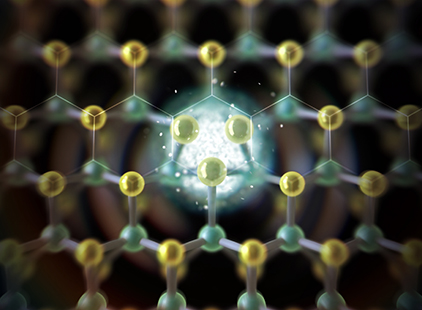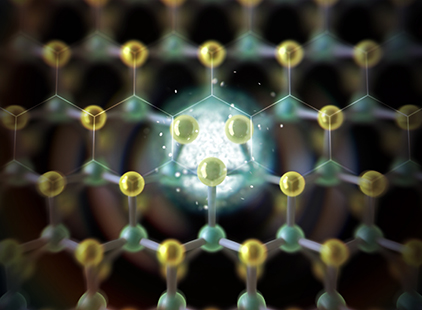Elusive Holstein polarons discovered in MoS2 two-dimensional semiconductor
Electrons moving inside a solid and surrounded by a moving charge distortion, known as Holstein polarons, have been discovered in the MoS2 two-dimensional semiconductor.
An electron passing through a solid can affect the atoms of that material by creating a surrounding area of distorted charge. From another perspective, the electron can be seen as moving while carrying this surrounding distortion; this kind of electron is called a “polaron.” There are two types of polaron: Fröhlich and Holstein. In a study recently published in the scientific journal Nature Materials, scientists at Yonsei University led by Prof. Keun Su Kim, in collaboration with researchers from other institutions, discovered Holstein polarons in the MoS2 two-dimensional semiconductor.


Of course, the discovery of new composite particles is a major research target in condensed matter physics. One way of identifying these particles is by adding (or “doping”) a certain number of charge carriers, i.e., mobile charged particles, to two-dimensional semiconducting crystals and investigating the results. Prof. Kim and colleagues used this method to discover Holstein polarons in MoS2, by first doping the semiconductor surface with electrons. According to Prof. Kim, “This discovery was made by using controllable materials, alkali-metal (or rubidium) atoms that donate electrons to a secondary material, the MoS2 semiconductor.”
To find the polarons, it was necessary for researchers to measure the energies and momenta of the electrons inside the doped solid. To do this, a technique known as angle-resolved photoemission spectroscopy (ARPES) was used. The researchers carefully tailored the samples and experimental settings to perform high-resolution ARPES measurements.
When analyzing the measurement results, they noticed very specific patterns that indicated the presence of Holstein polarons. These patterns are called spectral functions and this is the first time the Holstein polaron spectral function has been observed in an experiment. Although the ARPES observation method was already expected to reveal the Holstein polaron spectral function, no suitable material system had been found until Prof. Kim and colleagues considered the MoS2 surface-doped semiconductor. “My colleagues and I believe that this discovery can provide important clues to help resolve unknown physics such as the mechanism of high-temperature superconductivity” adds Prof. Kim.
Going forward, the discovery of Holstein polarons in MoS2 is expected to enhance our knowledge of the mechanisms of superconductivity, and to clarify carrier behavior in devices based on the MoS2 material.
Recommended Articles
Professor Byeong-Su Kim
New study demonstrates that “deformable” electronics are not a stretch
Professor Yeonjin Yi